
Bottom of Kaieteur Falls, Guyana. |
Climbing Mount Roraima - Part 2
Throughout the 18th and 19th centuries, all explorers had to reach Mount Roraima from Guyana. It was an extremely difficult route. Rivers of Guyana Highlands are too fast and have too many waterfalls to go upstream by boat, so all supplies had to be hauled through hundreds of miles of roadless jungle.
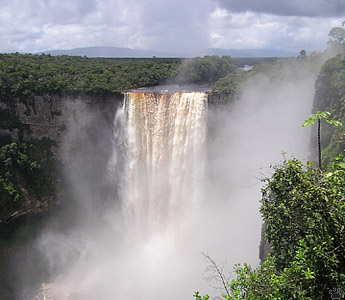
Kaieteur Falls, Guyana. |
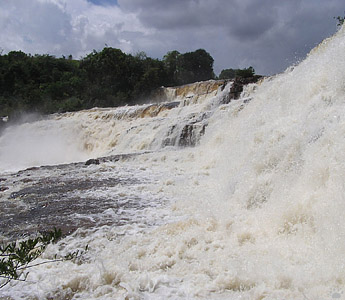
Orinduik Falls, Guyana. |
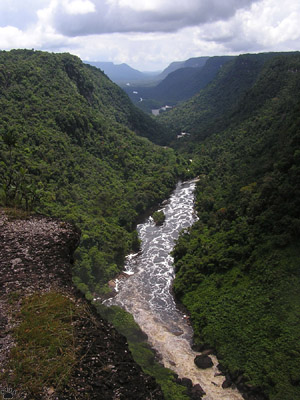
View from the top of Kaieteur Falls. |
In the 1950-s, a new road between Venezuela and Brazil came to within a few kilometers from Roraima, and made access very easy. Some of the waterfalls are now tourist attractions of their own. The most famous are 251 m/822 feet tall Kaieteur Falls. |
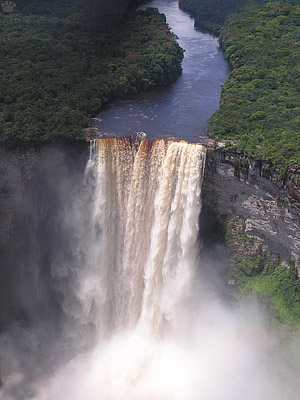
Kaieteur Falls, Guyana. |
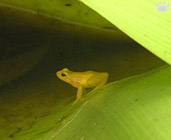 |
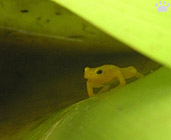 |
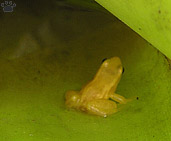 |
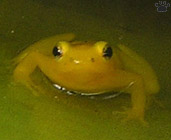 |
| Golden frog (Colostethus beebei) is endemic to Kaieteur Falls area, where it lives among the leaves of giant bromeliad (Brocchinia micrantha). |
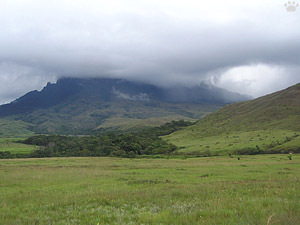
Grasslands on the way to Roraima. |
The trail to Roraima starts from Paratepui, a small Pemon Indian village, and goes through dry grasslands called La Gran Sabana. |
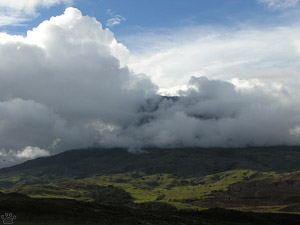
Watching the mountain is never boring. |
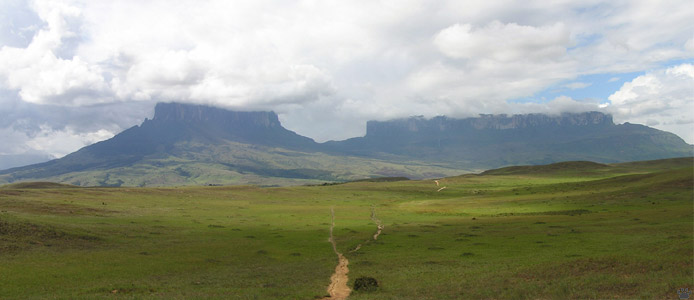
The trail to Mt. Roraima (right) and its sister tepui, Mt. Kukenan (left). |
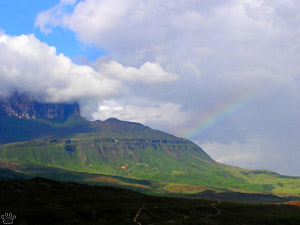
Approaching Roraima. |
Most people climb to the summit in three days, although it can be easily done in two. There are three campsites and two river fords along the way. |
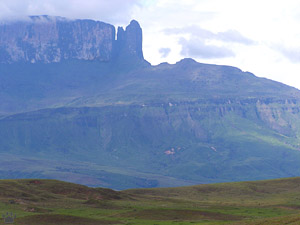
The mountain looks a bit intimidating up close. |

Grass Bulbostylis paradoxa, Paratepui. |
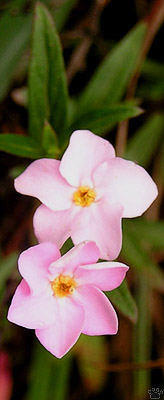
Flowers Sipanea sp., Roraima. |

Tepui bladderwort (Utricularia humboldtii), Roraima. |
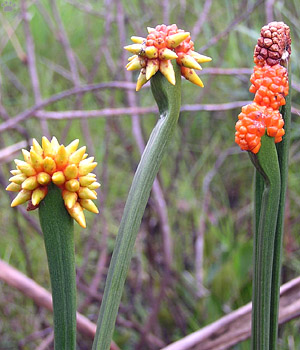
Flower buds of Stegolepis guyanensis, Roraima. |
The grasslands are not the most interesting part of the climb, but the views are great, and as you approach the mountain, you see more and more weird plants around: carnivorous bladderworts, bromeliads, orchids, etc. |
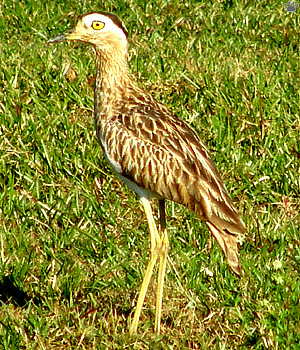
Double-striped thick-knee (Burhinus bistriatus), Paratepui. |
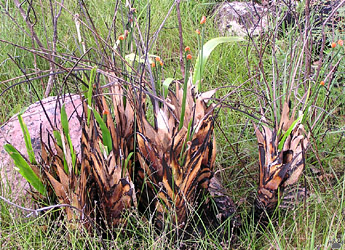
Plants S. guyanensis growing back after a grass fire, Roraima. |
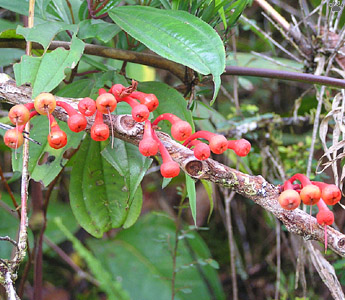
Unknown tree (probably Psammisia guianensis), Roraima. |

Clusia sp., Roraima. |
This area was once forested, but in the early 20th century fire destroyed the forest everywhere, except for deep canyons and the bases of the tepuis. |
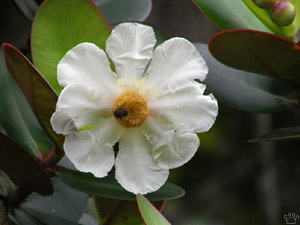
Clusia sp., Roraima. |
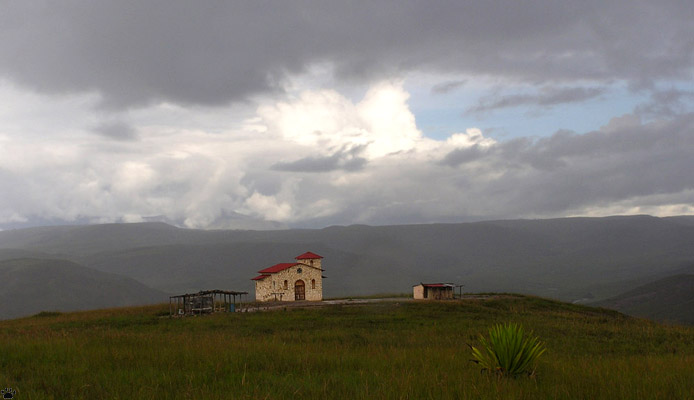
A small church halfway up the trail to Roraima. |
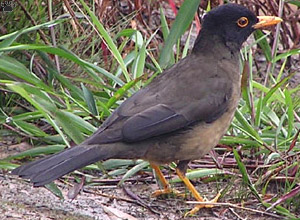
Black-hooded thrush (Turdus olivater), Roraima. |
The forests have a lot of interesting birds. There are a few cock-of-the- rock leks around Roraima, but all are difficult to access. |
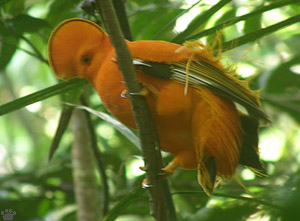
Guyanan cock-of-the-rock (Rupicola rupicola), Refugio do Mangoara. |
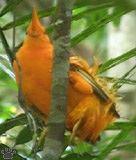 |
 |
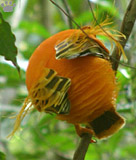 |
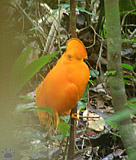 |
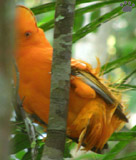 |
| Guyanan cocks-of-the-rock, Refugio do Mangoara. |
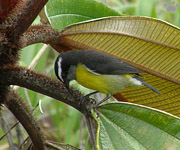
Roraima bananaquit (Coereba
flaveola roraimae), Roraima. |
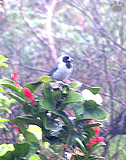
Black-faced tanager
(Schistochlamys melanopis). |
Eventually you find yourself in a beautiful cloud forest, full of wonders. |
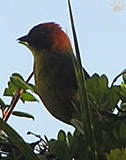
Tepui brush-finch (Atlapetes
personatus), Roraima. |
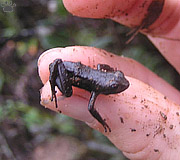
Roraima frog (Colostethus roraima)
lives inside bromeliads. |

Cloud forests of Roraima. |

Tree fern, Roraima. |
Cloud forests of Roraima are very rich in ferns, mosses, liverworts, bromeliads, orchids, and weird plants with giant leaves, such as giant rhubarbs. |
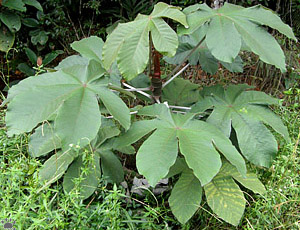
Young cecropia tree (Cecropia angulata), Roraima. |
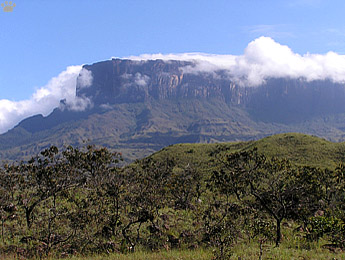
Forest islands at the base of Roraima. |
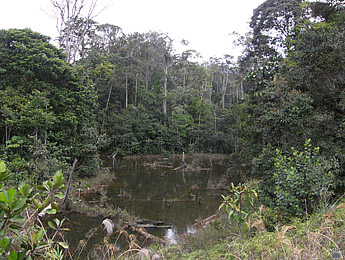
Forest lake at the base of Roraima. |
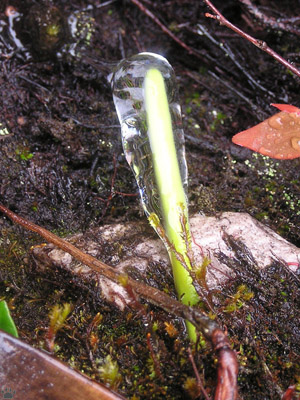
Saponin on a tree seedling, Roraima. |
An interesting feature of these forests is the abundance of saponin- producing plants of Sapindaceae family. They produce huge blobs of soap- like slime, accumulating on the forest floor and later floating down local rivers in gigantic masses of foam. |
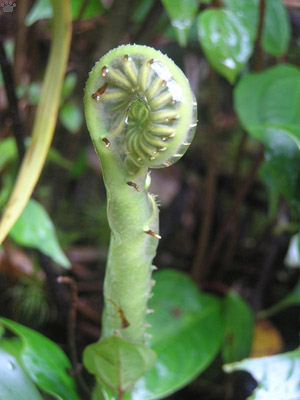
Saponin on a young fern leaf, Roraima. |
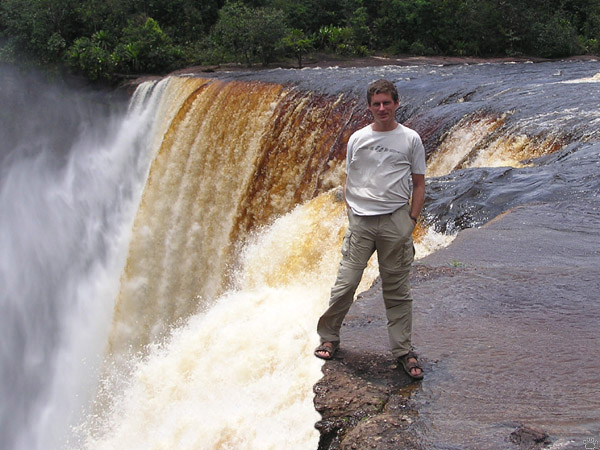
Windy day at Kaieteur Falls. |
Part 3. The Climb
Back to Part 1
Home
|










































